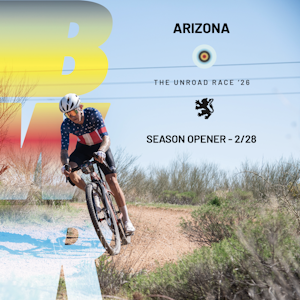Top 11 Toughest Climbs Used in Professional Cycling
From the Spring Classics to the Giro d'Italia, the Pro Peloton are subjected to the toughest climbs in cycling
Some race organizers go out of their way to make sure they are tough as possible, especially in the Grand Tours where a succession of brutal climbs in mountain stages and mountain top finishes leave no argument as to who the overall winner is.
Here's our list of some of the toughest climbs the Professional's face.
11. The Koppenberg, Belgium
Used in the famous Flemish Classic, the Tour of Flanders, this climb is feared by many in the professional ranks.
At only 700 yards long (600 metres) with an average gradient of 11.6% and rising 253 feet (77m) you'd wonder what all the fuss was about?
Because of its smooth cobblestones and steep gradients, up to 22%, this makes the Koppenberg brutal, even for the very top professionals - and that's if it's dry.
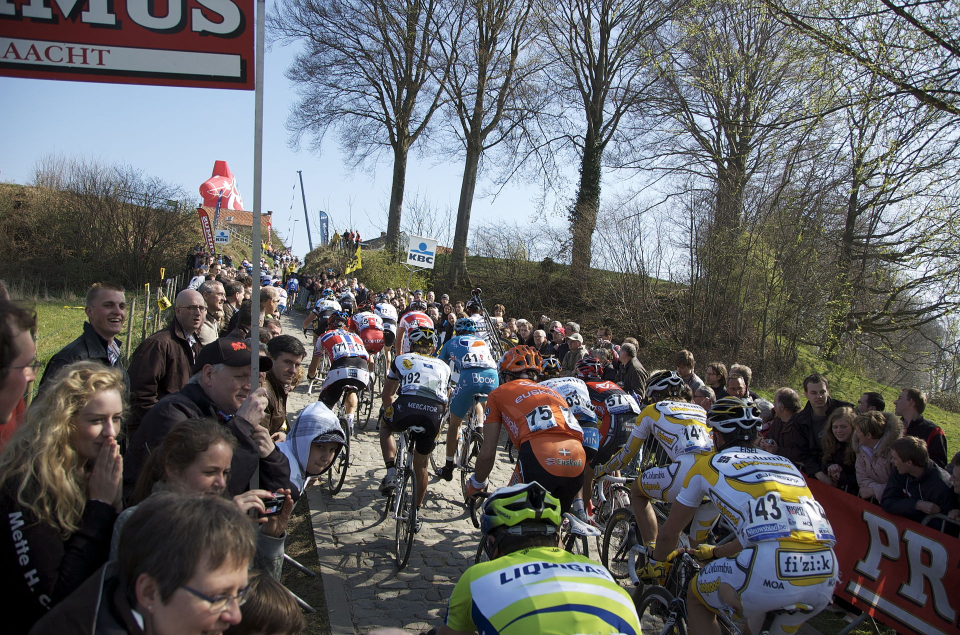
10. Muro di Guardiagrele, Italy
This eye-wateringly steep climb is famously used in the Italian race Tirreno Adriatico. Alberto Contador (Tinkoff-Saxo) famously won stage 5 of the Tirreno Adriatico in 2014 on the steep slopes of the Muro di Guardiagrele.
The climb is modest in length at just 2,600 feet long (800 meters), however, with an average gradient of 26% and a steeper section of 30%, it’s enough to make a pro race look like a club run.
Contador caught the remains of the day's breakaway on the lower slopes. Benjamin King (USA) Garmin-Sharp famously counter-attacked at the bottom, but Contador rode away, Simon Geschke (GER) Giant-Shimano was the only rider to stay within seconds of Contador, the rest of the peloton minutes behind.
Contador famously took the overall lead and Nairo Quintana lost minutes, and on went on to win the race.

9. Mont du Chat, France
It's hard not to include a climb that got the better of Eddy Merckx and because not many of us have ever climbed this brutal hors-category monster. Its presence in the 2017 Dauphiné Libere and stage 9 of the 2017 Tour de France , firmly put this relatively unknown climb near Lac du Bourget on the map.
In fact, French magazine Le Cycle labelled the Mont du Chat “one of the hardest” climbs in France.
However, the climb is more widely known for it's descent, it was in 1974 that Raymond Poulidor dropped multiple winner Eddy Merckx on the very steep slopes of Mont du Chat, in the hope to win some minutes and finally to win the Tour. But Merckx didn't crack, he chased down Poulidor on the even steeper trecherous descent and eventually won the stage into Aix les Bains.
It's also where Richie Porte crashed heavily and broke his collbone and pelvis as he collided with Dan Martin. Porte ended up in a wheel chair before starting his recovery process.
Mont du Chat is 8.7 km long and has an average gradient of 10.3 percent, but it is its position at the end of the 182 km stage 9 from Nantua to Chambery in the 2017 Tour de France made it the most daunting, being the seventh climb of the day.
The Jura mountains features a few other climbs that are becoming more well known, including the Col du Grand Colombier. Both of these climbs are stunningly beautiful, steep, wooded and virtually traffic free, definately should be part of any Col Climbers bucket list.

8. Col du Galibier, France
What makes the Col du Galibier one of the all-time toughest climbs in the Tour de France? It can’t be reached before cresting either the Col du Lautaret from the south or the Col du Telegraphe from the north. It’s also 8,678 feet (2,645 metres) above sea level, which is usually the highest point in the tour when the L’Alpe d’Huez doesn't feature.
Because it’s incredibly long, up 36km from the north including the Col du Telegraphe, it can be hard to judge your effort.
Marco Pantani’s historic attack on the Col du Telegraphe and onto the Galibier solo in the rain to take control of the 1998 Tour is perhaps the climb’s most historic moment. The long arduous climb gets a lot steeper in the last 10 kms from the north side, you reach Plan Lachat and it rears up to over 10%, you can't really see the summit until the final kilometers.
The descent can be more brutal than the actual climb, it's well known that that any rider can easily suffer from hypothermia without additional layers on the descent.

7. Passo dello Stelvio, Italy
Used regularly in the Giro d'Italia (11 times), this 15 miles (24.3 km) climb features an incredible 48 hairpins. With an average gradient of 7.4%, getting as high as 14%, it is one of the most beautiful climbs in the world and was described as the greatest road to drive in the world when it featured on the TV show Top Gear (Grand Tour).
Reaching an altitude of 9,050 feet (2,758 m), the beauty of its sun-bathed hairpins masks the reality of the climb with the road often lined in snow and the weather far from predictable.
When used in the Giro d'Italia, the Stelvio typically features in the middle of a stage. It is feared and respected by the Pro peloton. The sheer endurance required to conquer its slopes can see even the top professional riders crack, and lose huge amounts of time.
At its best, the Stelvio is a must for any cyclist’s bucket-list, with thousands flocking to its slopes every year and features in the Gran Fondo Stelvio which takes place every summer. At its worst, it is a brutal climb and one which has punished even the top professional riders in recent Giro d’Italia history!

6. Alpe d’Huez, France
Ask any pro cyclig fan to name a famous Tour de France climb and many will name the famous 21 hairpins of the Alpe d’Huez. Italian cycling legend Fausto Coppi was the first man to conquer the brutal ascent at the Tour and it has remained a popular fixture ever since.
In 2013, Chris Froome famously bonked on the ascent, before team-mate Richie Porte got hold of a gel for him.
It's maximum gradient is 13 per cent, and has an average of 8.1 per cent over the 8.6 miles (13.8 kms), but the 21 hairpins mean the constant switchbacks demand every last ounce of energy. The climb invariably comes at the end of a brutal mountainous stage.
In 2001, Lance Armstrong famously feigned vulnerability earlier in the stage, appearing to be having an off-day. At the bottom of the Alpe d'Huez climb, Armstrong moved to the front of the lead group of riders, looked back at Jan Ullrich, attacked, dropped him, and went on to win the stage. The act famously went on to be known as "The Look".
Typically the teams with the overall contenders, will push the pace up before the bottom of the climb, which features one of the steepest gradients. The teams will line up their domestics and climbers one after another in front of their team leader, and work until they crack, pull over, leaving their leader the best opportunity to win the stage.
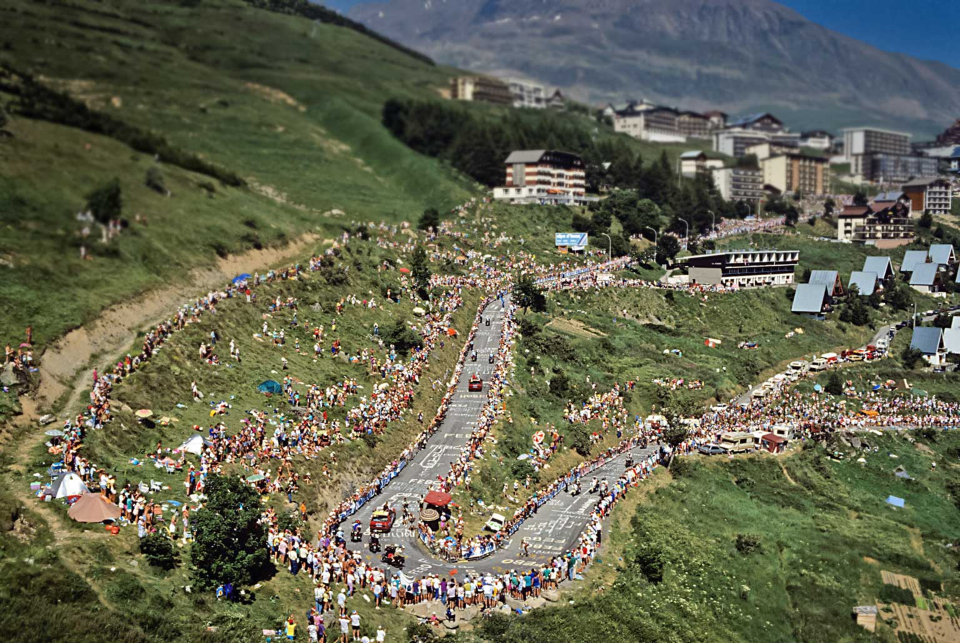
5. Mont Ventoux, France
One of the Tour de France’s most iconic landmarks, and famous for its red and white observatory at the peak (now used by the French airforce as communication beacon), Mount Ventoux is legendary and has been served up as a summit finish on over nine occasions.
The 21.4km climb gradient peaks at 12% and Britton Tom Simpson tragically died on the climb in 1967 and is honoured with a memorial close to the summit. Chris Froome’s win on the climb was one of the most memorable stages of his 2013 Tour de France triumph.
From the village of Bedoin, its gentle opening slopes lulls riders into a false sense of security, but the roads ramps up fiercely on the lower slopes. Nearer the top the climb opens up to a barron, moon like, desolate landscape, with only the Antenna at the top as a focus point. The famous white rocks reflect the heat making it even hotter.
Mont Ventoux is also known as the Giant of Provence and the weather can be very unpredictable. Rising out of the Provence, it can go from a sun baked oven to a snowstorm in the matter of minutes. The weather station not from the famous observatory, has recorded some of the highest windspeeds at over 200 mph..
One of the world's top Bucket List climbs, Mont Ventoux is feared and respected by professionals and amateurs alike.
Amateur riders can challenge themselves and compete for prizes every year at the Haute Route Ventoux. Mont Ventoux is an area of outstanding beauty, with a huge biodiversity of animals and plants.
The peace can be shattered momentarily by a squadron of French Airforce fighters moving at supersonic speeds as they turn tightly onto a new heading. An amazing spectacle!
Grab a bottle of Cotes du Ventoux wine - grown from grapes around the Mountain!
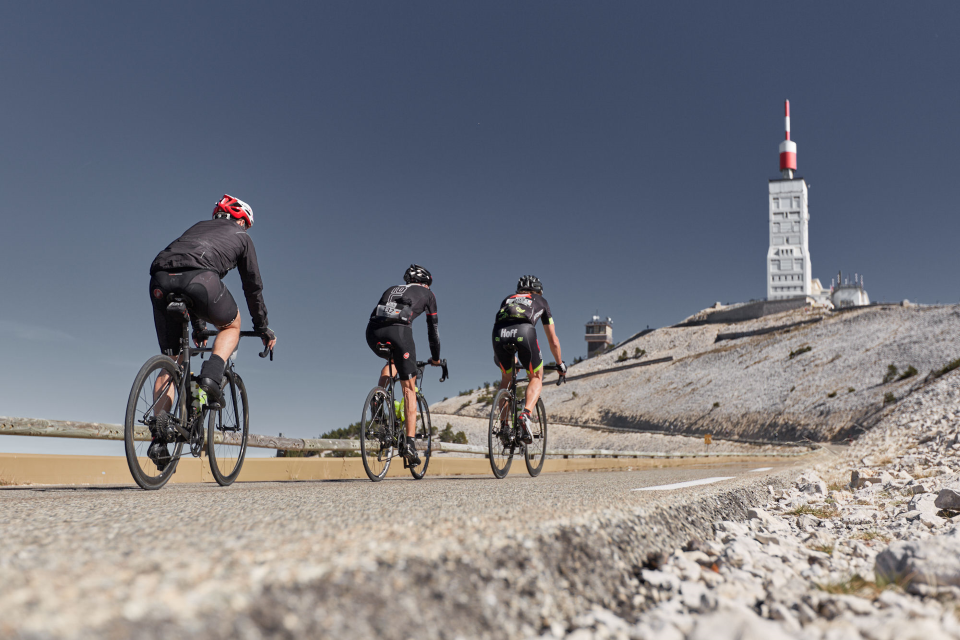
4. Muro di Sormano, Italy
Nicknamed ‘The Wall’, many pro cyclists would rather go home than tackle this climb! Not far from the shores of lake Como and with an average gradient of 17% that peaks at 25%, the climb was removed from the Giro di Lombardia three years after its introduction in 1960 after complaints that the climb was so steep that riders were either falling off or being pushed up by fans.
Much to the displeasure of the Pro peloton, the climb found its way back into the race in 2012 after it was lovingly restored to it's former glory, featuring stencils throughout the climb. It features split-times and soundbites from the riders of the climb from the 1960s era. The fastest time for this short, sharp shock is 7 minutes 36 seconds, held by local rider Matteo Cappè.
In the 2012 edition of the Giro di Lombardia, it featured about 80 km from the finish of the race and before the less brutal and better known Madonna del Ghisallo climb. French rider Romain Bardet (Ag2r-La Mondiale) was the leader at the summit, although the eventual winner of the race was the Spaniard Joaquim Rodríguez.
Amateur riders can tackle this absolute brutal monster climb in the Gran Fondo Lombardia.
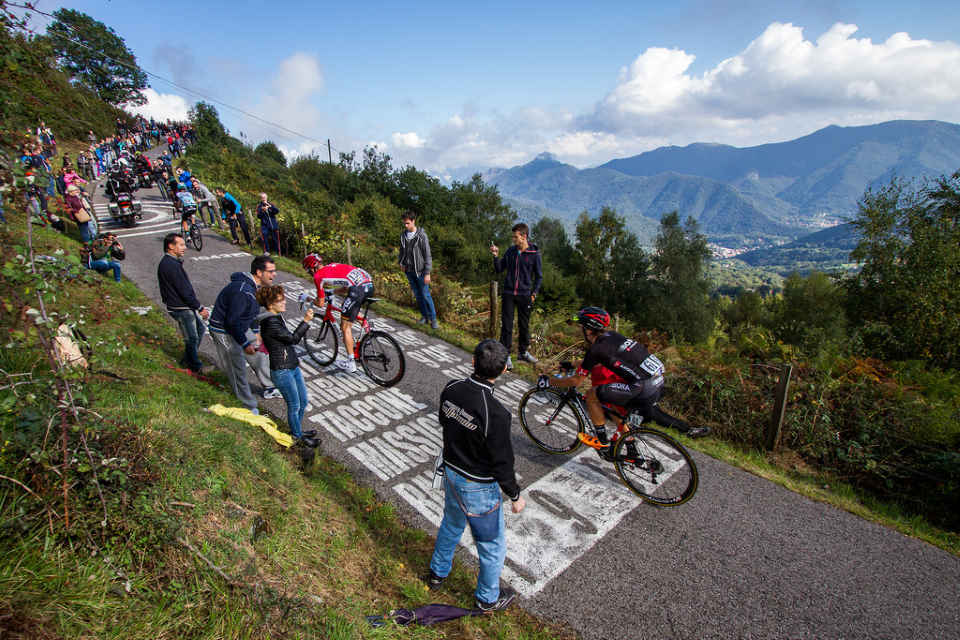
3. The Monte Zoncolan, Italy
Used five times in the Giro d’Italia not including 2018, the Monte Zoncolan features narrow roads, dark tunnels to daunting switchbacks.
The torturous climb has an average gradient of 12% for 10km, but with gut-wrenching sections of gradients in excess of 15%.
The race will reach this point on Saturday the 18th of May, during stage 14 of the Italian Grand Tour. The rriders will face the climb of 10.1 kilometres, reaching more than 1,200 metres of height. Stage 14 is rumoured to feature over 4,000m of climbing.
The Monte Zoncolan was first used in the Giro in 2003 when Italian rider Gilberto Simoni took the victory. Four years later, the Giro came back to the ascent and Gilberto Simoni won again, temporarily giving the climb the nickname of Monte Simoni.
In 2010, the peloton climbed the mountain for the third time and Ivan Basso took the victory and went on to second in overall General Classification. The next year, the climb to the Zoncolan had a new winner, Igor Anton, who beat Alberto Contador, the eventual winner of that year's edition.
The last time that Monte Zoncolan featured in the Giro was in 2014 when Australian Michael Rogers took the victory on the penultimate stage and Colombian Nairo Quintana secured his overall win.

2. Alto del Angliru, Spain
The Alto del Angliru is considered by many to be the toughest climb in Spain and features regularly in Spain's Grand Tour, the Vuelta a Espana.
The 4,000 ft climb is 7.8 miles long and has an average gradient of 10%, and features terrifyingly steep sections anywhere from 20% to 24%.
In 2002, British rider David Millar famously abandoned the race in protest, when wet conditions became so hard that it was difficult to finish the stage.
In 2017, Alberto Contador provided a real treat for Spanish fans on Stage 20 and capped off his successful career with one final Grand Tour win in his last race before retirement. He attacked at the bottom of the punishing Alto de l’Angliru to create a memorable solo performance. Chris Froome went on to win the race overall.
The American rider Chris Horner famously withstood a series of attacks from Vincenzo Nibali and pulled away in the mist of the sky-high Alto de L'Angliru to give himself a comfortable lead heading into the final day of the 2013 Vuelta a Espana and secured overall victory.

1. Passo di Mortirolo, Italy
Mortirolo sounds like morte, death in Italian. A relentless climb and one of a few to become famous without being a “summit” finish. Lance Armstrong famously labelled the Passo di Mortirolo the hardest climb he'd ever ridden and Lucho Herrera referred to the Mortirolo as being the "Queen climb of Europe".
The Passo di Mortirolo reaches an elevation of 6,076 ft (1,852 m) above sea level, located in the Italian Alps not too too far from its cousin's the Passo del Stelvio and the Passo Gavia. This legendary climb is one of the most demanding climbs in professional cycling having been used in the Giro d'Italia stage race many times.
There are three routes up the Passo di Mortirolo, but the fearsome ascent from Mazzo di Valtellina that is used in races is considered the hardest with an average gradient of 11 per cent, across 12.4km with sections over 18% and never lets up.
Another route up from Tolo, is so steep at the top, that ridges have been cut into the concrete so vehicles can gain enough traction to climb it. This route is used in the Gran Fondo Stelvio has sections at 25-30% near the top. After already cycling 11 kms at 11%, this is virtually unrideable for the many thousands who take part every year!

In 2010, Chris Froome was famously disqualified from the Giro d'Italia after hanging onto a motorbike.
A little more than halfway up the Mortirolo, there’s a monument to the late Marco Pantani, who died on Valentine’s day in 2004. It’s a carving of the legend out of his saddle, in his drops, looking back, grimacing triumphantly, in full flight, forever up the mountain aboard his Bianchi.
Since the death of Marco Pantani, stages of the Giro d'Italia that use the Mortirolo, feature a special prize to the first rider to the top, called Cima Pantani ("Pantani Top").
In 2015, Contador famously bridged a gap to his main rivals Fabio Aru and Mikel Landa, having lost time due to a puncture on the descent from Aprica.
Amateur riders can climb the Motirolo in the Gran Fondo Stelvio which takes place every summer.
What do think of our list, think we can do better? Let us know on our Facebook page.



 Sun Jan 18 - 4am, 9am, 3pm EST
Sun Jan 18 - 4am, 9am, 3pm EST